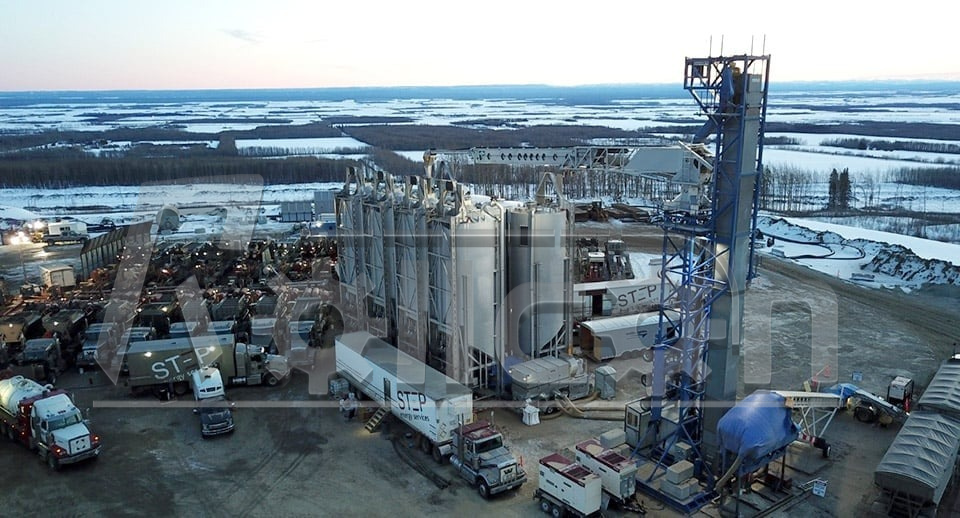Home ► What We Do • Bulk Material Conveying ► Bucket Elevator Basics
Bucket Elevator :
Powerful Vertical Conveying

Buckets are the primary components of a bucket elevator, responsible for scooping up and carrying bulk materials vertically. They come in various shapes, sizes, and materials to suit different applications and material handling requirements.
- 1. Buckets : These are the containers attached to the belt or chain, designed to scoop up and carry the materials.
- 2. Belt or Chain : Provides the driving mechanism for the buckets to move vertically.
- 3. Drive Unit: : Consists of the motor, gearbox, and pulleys or sprockets, responsible for driving the belt or chain.
- 4. Head Section : Where the material is loaded into the elevator.
- 5. Boot Section : Where the material is discharged from the elevator.
- 6. Casing : Encloses the elevator components for safety and to prevent spillage.
*Key Components:*

Equipment Quick Links
MATERIAL HANDLING
- 1. Agriculture : Used for handling grains, seeds, fertilizers, and other agricultural products in grain elevators and feed mills.
- 2. Mining : Transporting ores, coal, minerals, and aggregates in mining and mineral processing operations.
- 3. Construction: : Handling sand, gravel, cement, and other construction materials on job sites and in concrete plants.
- 4. Head Section : Where the material is loaded into the elevator.
- 5. Manufacturing : Moving bulk materials in factories and warehouses for processes like mixing, blending, and packaging.
- 6. Power Plants: : Transferring biomass, fly ash, and other materials in thermal and renewable energy facilities.
*Applications and Uses:*
*Component: Buckets*
Buckets are the primary components of a bucket elevator, responsible for scooping up and carrying bulk materials vertically. They come in various shapes, sizes, and materials to suit different applications and material handling requirements.
- 1. Deep Bottom Buckets : Designed for handling bulky materials or those with poor flow characteristics, such as grains and aggregates.
- 2. Shallow Bottom Buckets : Suitable for free-flowing materials like fertilizers and pellets, offering higher capacities and faster discharge rates.
- 3. Non-Spill Buckets: : Equipped with special lips or features to minimize material spillage during loading and discharge.
- 4. Venting Buckets : Designed with ventilation holes or slots to prevent material buildup and reduce the risk of jamming or blockages.
Types of Buckets:
*Component: Belt or Chain*
The belt or chain is the driving mechanism of the bucket elevator, providing the motion necessary to transport materials vertically. Belts are commonly used for lighter loads and gentler handling, while chains are preferred for heavier loads and rugged environments.
- 1. Rubber Belts: Suitable for handling light to moderate loads and materials with minimal abrasiveness. Available in various configurations, including flat belts and cleated belts.
- 2. Steel Chains : Ideal for heavy-duty applications and materials with high abrasiveness or temperature extremes. Typically constructed from alloy steel or stainless steel for durability and strength.
Types of Belts or Chains:
*Component: Drive Unit*
TThe drive unit comprises the motor, gearbox, and pulleys or sprockets responsible for driving the belt or chain of the bucket elevator. It provides the power necessary to move materials vertically and controls the speed and direction of the conveyor system.
- 1. Direct Drive: Directly connects the motor shaft to the drive pulley or sprocket, offering simple and efficient power transmission with minimal maintenance requirements.
- 2. Indirect Drive : 2. Utilizes a gearbox or transmission system to adjust the speed and torque output of the motor, providing greater flexibility and control over conveyor operation.
Types of Drive Units:
- 1. Material Loading : Provides a controlled entry point for materials into the elevator buckets, ensuring efficient and uniform filling.
- 2. Belt or Chain Guidance : Guides the belt or chain onto the head pulley or sprocket to maintain proper alignment and prevent tracking issues.
- 3. Drive Connection: : Connects the drive unit to the conveyor system, transmitting power to the belt or chain for vertical movement.
*Component: Head Section*
The head section of the bucket elevator is where the material is loaded into the elevator for vertical transportation. It typically includes the inlet chute, head pulley or sprocket, and drive assembly.
Functions of the Head Section:

Bucket elevator head section
- 1. Material Discharge : Guides the discharged materials out of the elevator buckets and into the desired receiving equipment or destination.
- 2. Belt or Chain Tensioning: : Provides a mechanism for adjusting the tension of the belt or chain to maintain proper alignment and tension throughout the conveyor system.
- 3. Boot Shaft Seal: Prevents material spillage and dust emissions at the discharge point, ensuring environmental compliance and safety.
*Component: Boot Section*
The boot section of the bucket elevator is where the material is discharged from the elevator after reaching the desired height. It typically includes the outlet chute, boot pulley or sprocket, and take-up assembly.
Functions of the Boot Section:

Bucket elevator boot section with take-up assembly


